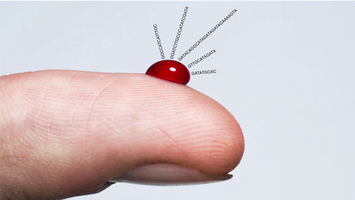Reference-Genome Blood Groups

Principal Investigator: Prof. Dr. Christoph Gassner
Collaboration with: Prof. Dr. Andre Franke, Institute of Clinical Molecular Biology (IKMB), University of Kiel
Routine blood group detection is currently still carried out with standard serological methods, e.g. the so-called agglutination method. In parallel, since the early 1990s, the elucidation of the genetic code of nearly all (> 99%) transfusion relevant antigens has been achieved.
Hence, over the past 20 years, the use of DNA-based methods in blood group diagnostics has strongly increased. In addition to the detection of single point mutations, modern sequencing techniques have also gained importance in routine blood group determination and diagnostics. Whole single genes, or even a combination of all genetic blood group characteristics of a given person can be sequenced, yielding individual “blood group genomes”. Sequences that have already been documented in other individuals are highly useful - or even indispensable - for the bioinformatical analysis of new raw data. For this reason, known reference sequences are needed, ideally from many individuals, in other words a “Reference Genome of Human Blood Groups” – comparable to a herbarium for botanists, a field guide for ornithologists or a standard metre for surveyors.
For this purpose, the Institute of Translational Medicine has collected blood samples of approx. 500 donors in the Principality of Liechtenstein. With written permission of the donors and in collaboration with the Feldkirch Blood Bank, DNA was extracted from these samples. In 2022 and 2023, these and further samples from additional collaboration partners were analysed by cutting edge haplotype-specific sequencing (PacBio), in collaboration with the Institute of Clinical Molecular Biology (IKMB) in Kiel/Germany. For the project «Reference-Genome Blood Groups», the sequences of approx. 75 out of all ca. 20’000 human genes were analysed. The same genes were investigated in all samples, with a main interest in the occurring individual variants of these genes, the so-called alleles.
Since early 2024, terrabytes’ worth of raw data are available. They are now being successively analysed, identified, catalogued, and published, and they will eventually serve as reference-datasets to be used by informed experts. A substantial amount of work is still to be done towards the final product: a “genetic field guide for blood groups”.

